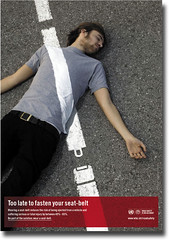In this business it's easy enough to forget just how good a car can be. It's just because we drive so many different kinds, from Daihatsu Sirions to supercharged Range Rovers, and the whole length of motordom in between.
It's a recipe for becoming blase. Or, or maybe and, becoming confused. 
And there's another thing. Cars in the middle ranges have improved so much in the last decade that from time to time people like me can forget that some particular brands, and particular models within them, can still stand out above the main herd.
That last has happened to me more than once. I've been occasionally so taken with the quality of a mass manufacturer's product that I've suggested it is hard to justify going above it for one of the 'prestige' brands. This isn't to say that I think I've been wrong, but it would be foolish to consider the elites not worth their penny.
I was reminded of this when recently reacquainting with the current BMW 3 Series. In the particular form of the 320d.
The 3 Series is the real bread-and-butter (or should that be cake-and-cream?) of the BMW brand, and arguably the one which most non-BMW owners aspire to in terms of the carmaker from Munich. And it comes in a number of flavours in both petrol and diesel variants. There is a valid position that there's no need to go beyond the 320d.

But first, the car itself. Even before Chris Bangle left the company's design stable, some of his styling excesses had already been smoothed out. But it is fair to say that by the time he came to produce the 3 Series, he had it all right, and this car, especially in saloon form, is one of the nicest cars in the BMW stable.
In format it is a classic three-box, with distinctive lines and a very smart rear roofline flowing into the bootlid. That gives an almost-coupe effect, without any of the disadvantages, and all in all the aesthetic balance of the styling is really good. From the front, the car is unmistakably a BMW of the most modern kind.
But it is from inside that the owner of a car must feel he or she has an automobile that reflects what has been spent, and in this respect I certainly feel it does so. The review car featured light cream leather and a really good representation of wood trim. The sculpting of the dashboard top offers its own part to the overall character of the car, while the level of build quality is as we would expect after shelling out €42,000-€50,000 for a car.
In options terms, the review car had a few high-cost items. The Nav system comes with a tag in excess of €3,000, close to another grand for Bluetooth phone preparation, and something similar for the automatic airconditioning. Parking control front and rear was another €900 plus, while the autobox added another €2,700 or so. The leather and wood interior adds a tad less than €5,000.
So, getting to this particular sense of luxury doesn't come cheap. But at least, the options you particularly want are at your own discretion.
The basic car in the 320d format is still what gives the typical BMW feeling of strong build and serious engineering. And it is that latter engineering expertise which has always underpinned what BMW is all about.
Having a 2.0 engine slotted into the B CO2 taxation band is quite an achievement, even if it is a diesel. It is just one of the real world expressions of what BMW calls their 'EfficiencyDynamics' programme. Being frugal in fuel consumption and emissions doesn't seem to come at any performance cost, either, as a 0-100km/h sprint in around eight seconds is very acceptable. Even more is the 80-120km/h acceleration of 6.6 seconds in fourth gear.
The auto trans worked seamlessly, and my driving experience with the car was never less than enjoyable. I really was reminded of how much value BMW put on their reputation for producing 'drivers' cars.
For the passengers, the accommodation is very good too. And unlike many cars in a similar size segment, there's enough leg and headroom in the rear to have a 6'2" man travel in comfort for any length of trip.
Right, there's money to be spent on acquiring this BMW, even in its basic specification. But I left the car back with the feeling that, more than most, the spend might be regarded to a great degree as an investment. Because I suspect that the 320d could safely be kept for at least five years without the owner having reliability worries, or getting tired of the ambience.
It's a bit like buying a suit. A cheap one will quickly show its age and wear, and might never even be comfortable. An expensive one will show its value for most of its much longer life.
Brian Byrne.




